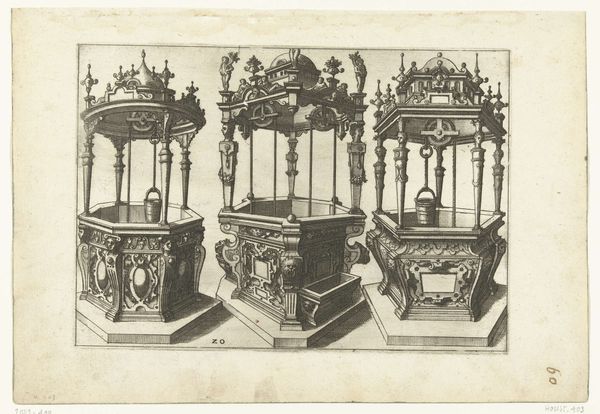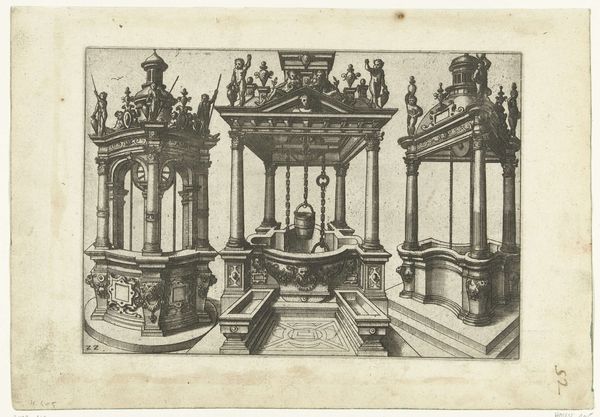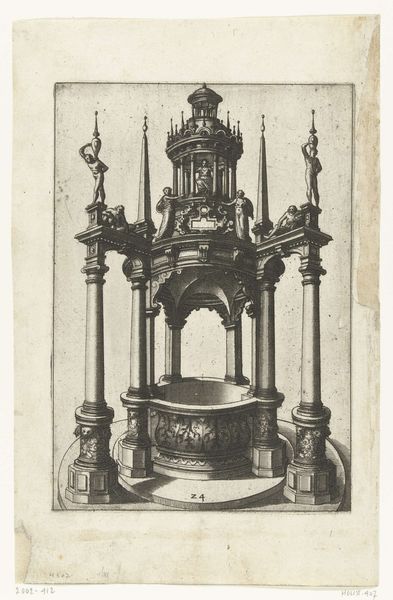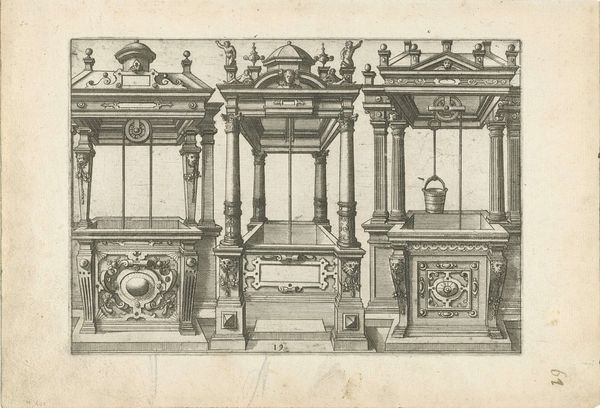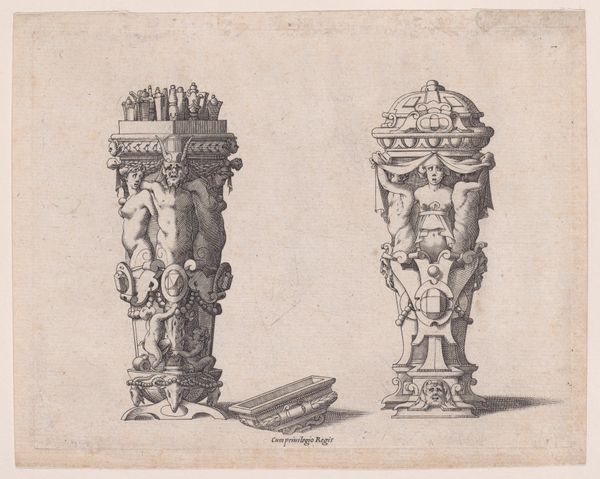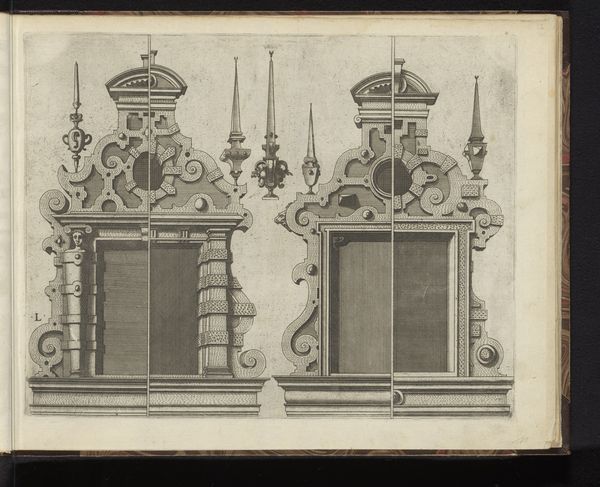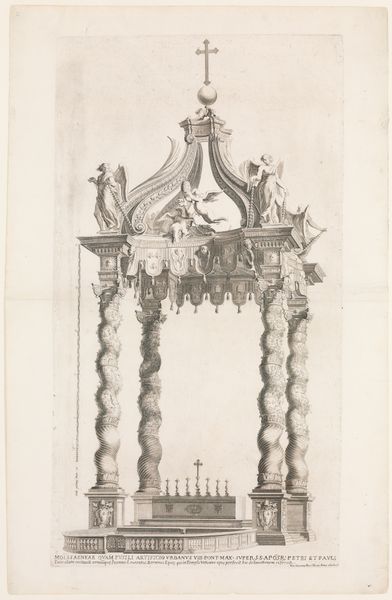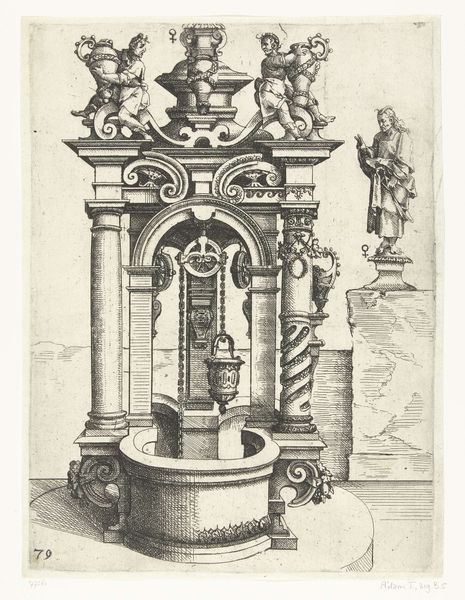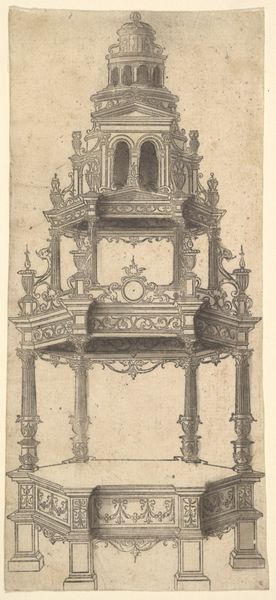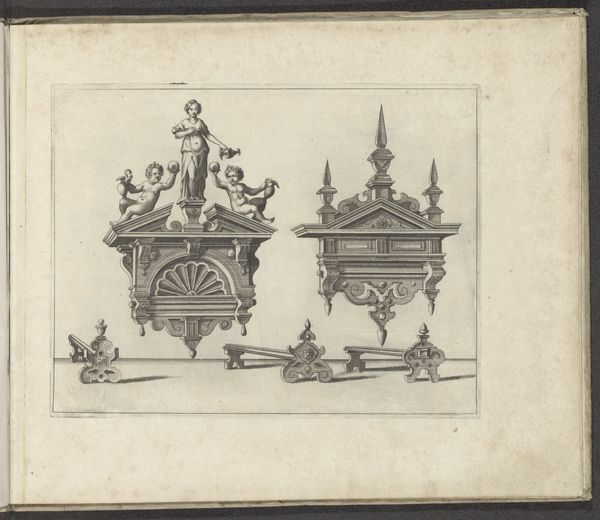
Drie waterputten, één met vier halfrond uitgestulpte zijden c. 1574
0:00
0:00
drawing, print, ink, pen, engraving
#
drawing
#
aged paper
#
toned paper
#
mechanical pen drawing
# print
#
old engraving style
#
11_renaissance
#
personal sketchbook
#
ink
#
pen-ink sketch
#
pen work
#
sketchbook drawing
#
pen
#
storyboard and sketchbook work
#
northern-renaissance
#
sketchbook art
#
engraving
Dimensions: height 144 mm, width 204 mm
Copyright: Rijks Museum: Open Domain
Johannes or Lucas van Doetechum’s “Drie waterputten, één met vier halfrond uitgestulpte zijden” is an engraving depicting three ornate water wells. The well, an ancient symbol, transcends mere utility, acting as a profound emblem of life's sustenance and deeper, often hidden truths. It is where the divine meets the mundane, a source of both physical and spiritual nourishment. Across cultures, from ancient Greece with its sacred springs to the biblical narratives of encounters at wells, this motif recurs, embedding itself deeply within our collective consciousness. Consider how the well, once a communal gathering point, evolves into a solitary element in modern art, reflecting perhaps a growing sense of individual introspection or isolation. Yet, even in isolation, the well retains its powerful allure, drawing us into its depths—metaphorically mirroring the psychoanalytic journey into the self, probing the waters of our subconscious. It’s a timeless conduit, continuously channeling historical memory and emotional resonance.
Comments
No comments
Be the first to comment and join the conversation on the ultimate creative platform.
